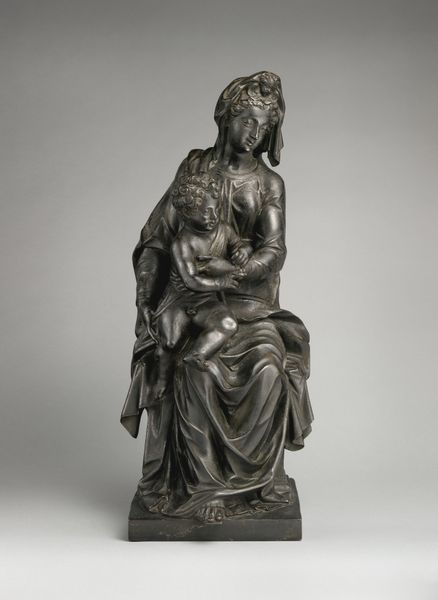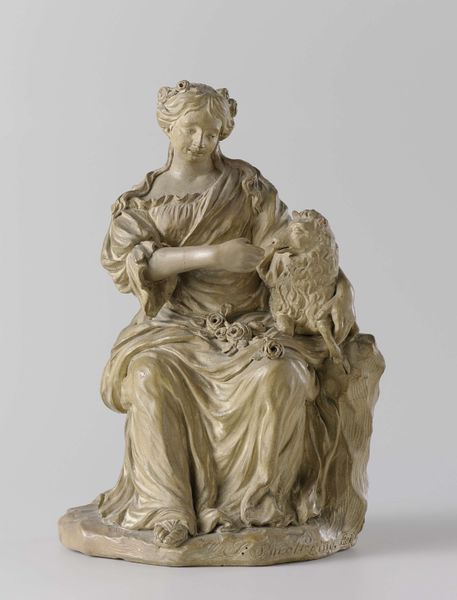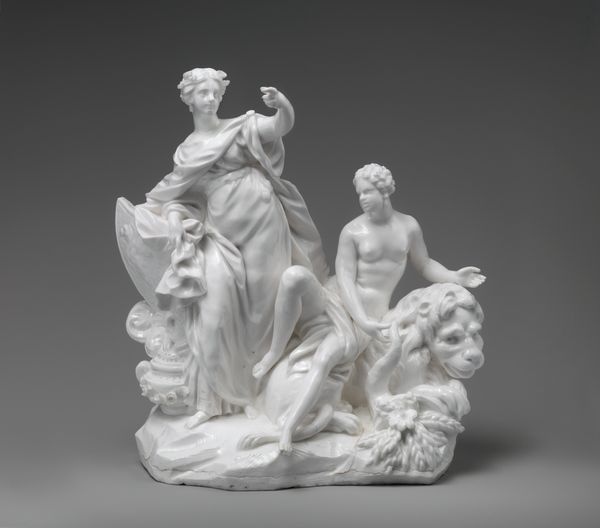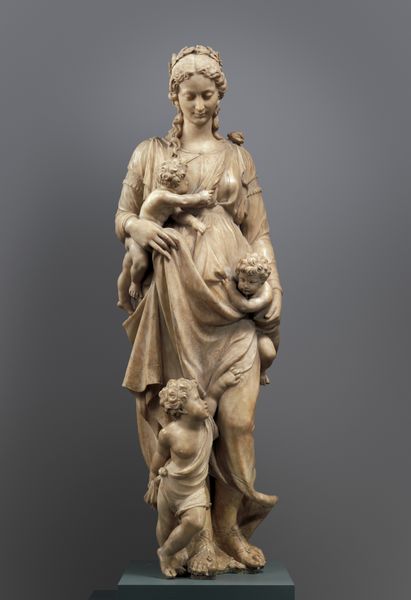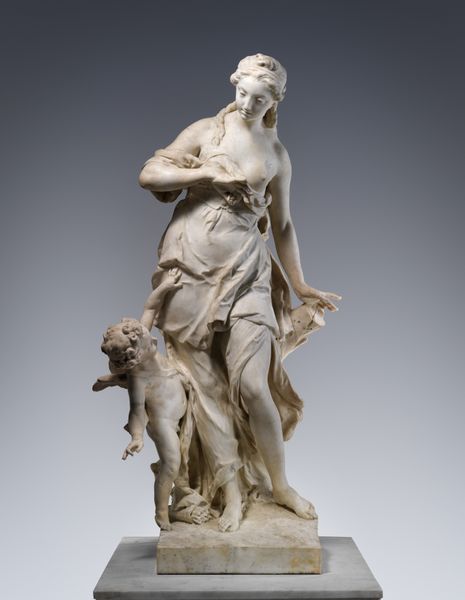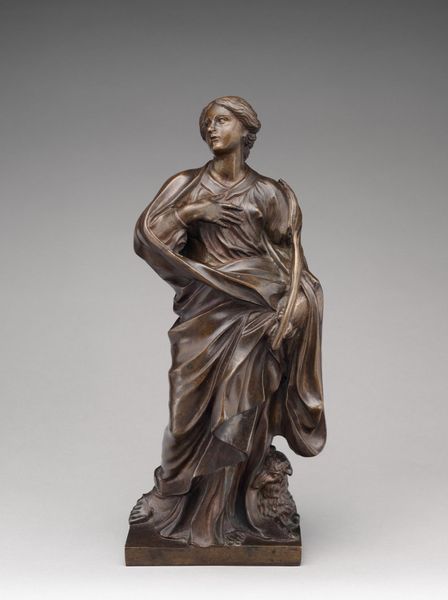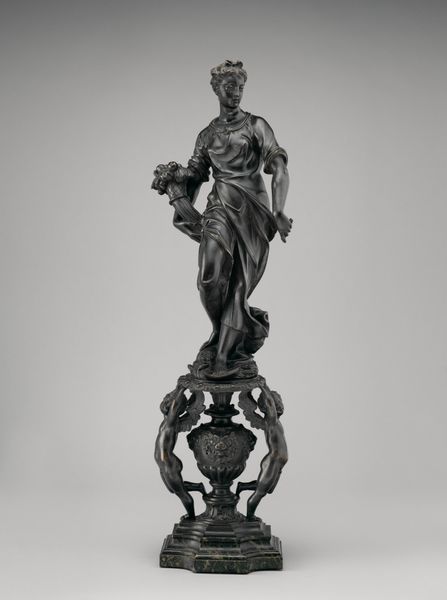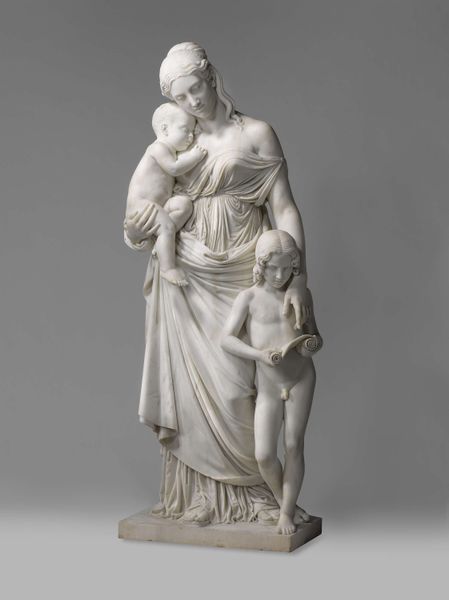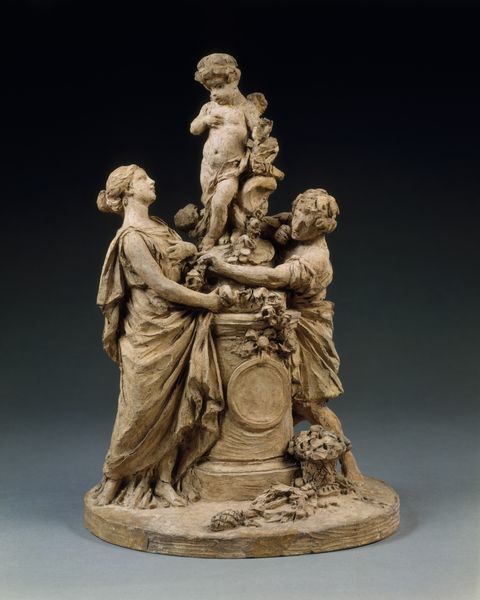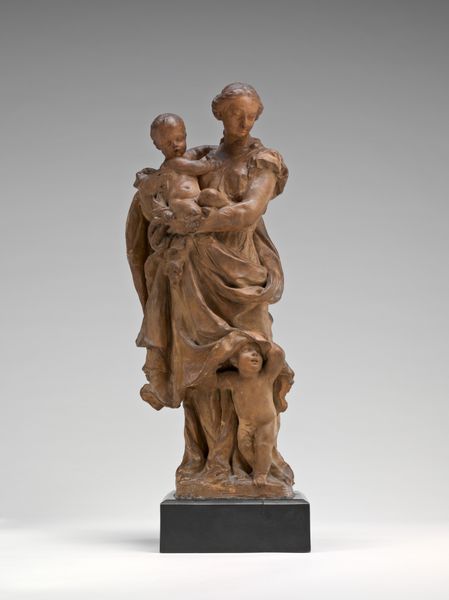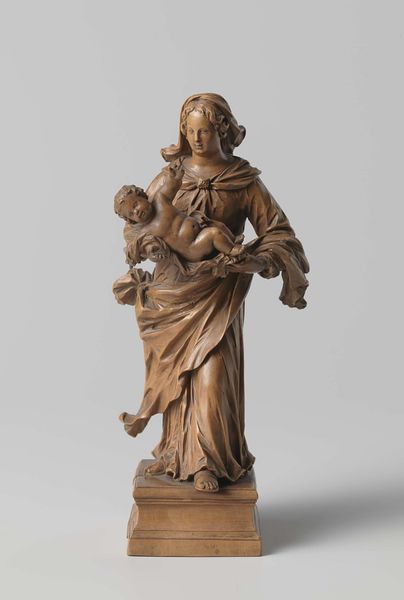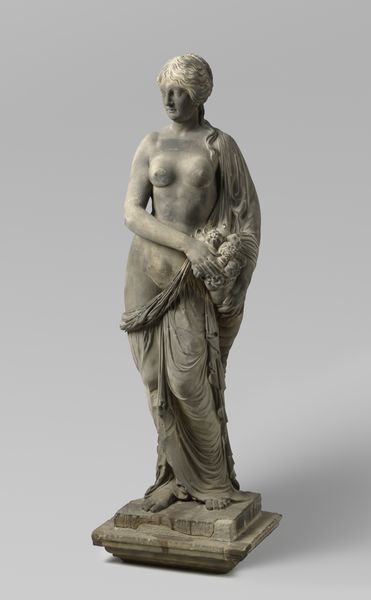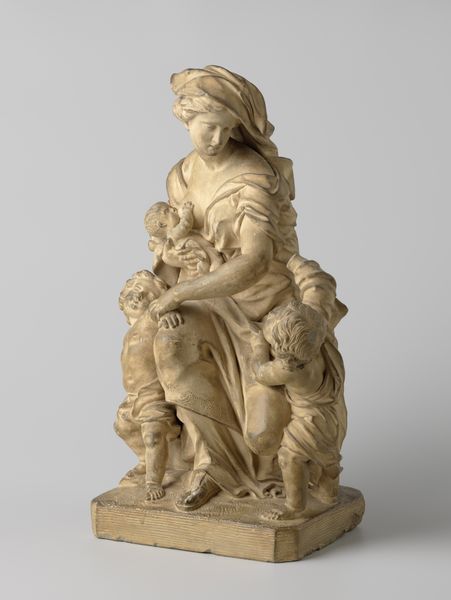
The Muses of Music and Poetry c. 18th century
0:00
0:00
bronze, sculpture
#
portrait
#
allegory
#
baroque
#
sculpture
#
classical-realism
#
bronze
#
figuration
#
classicism
#
sculpture
#
group-portraits
#
history-painting
#
academic-art
Dimensions: 24 5/8 x 15 1/2 x 10 1/2 in. (62.55 x 39.37 x 26.67 cm)
Copyright: Public Domain
Curator: Editor: This is "The Muses of Music and Poetry," a bronze sculpture by Guillaume Coustou the Younger from the 18th century. It’s very imposing. How would you interpret this work? Curator: For me, this piece isn’t just a beautiful object; it’s a window into the power structures of its time. These Muses, rendered in bronze, embody the idealization of artistic inspiration prevalent in 18th-century French society. Who had access to these forms of expression and education? What narratives were being amplified through art, and whose voices were being excluded? Editor: That's an interesting point. I guess I hadn't considered who gets to be a muse, and what that even means. Is it always about a passive object of inspiration? Curator: Exactly. And Coustou's choice of bronze, a material historically associated with permanence and authority, reinforces this idea of lasting influence. The very notion of Muses as external sources of inspiration can be critiqued. Does it undermine the agency and skill of the artists themselves, particularly if those artists are not privileged members of society? Can we consider these figures active agents of cultural production? Editor: So, instead of just seeing two elegant women, we should be thinking about the politics of artistic creation. Curator: Precisely. The academic style and allegorical subject situate it firmly within a specific intellectual framework that benefitted some while marginalizing others. How do we reconcile the aesthetic beauty with the social context? Editor: It’s almost like the sculpture is posing a question: who are we choosing to immortalize, and why? Thank you for this expanded perspective. Curator: I appreciate your insight. I now have new ideas to consider.
Comments
minneapolisinstituteofart almost 2 years ago
⋮
As Enlightenment tenets measured the civilization of a society by its treatment of women, the arts, and especially music, came to be understood in terms of feminine beauty. Women, while held to oppressive social standards, paradoxically also represented an aesthetic ideal. Notice in this sculpture that music, with a lyre under her arm, and poetry, with her fingers in the pages of a book, hold hands. Music and poetry were expected to perfectly complement one another, a goal exemplified by the careful singing lessons outlined in the Journal de la mode’s pages.
Join the conversation
Join millions of artists and users on Artera today and experience the ultimate creative platform.
